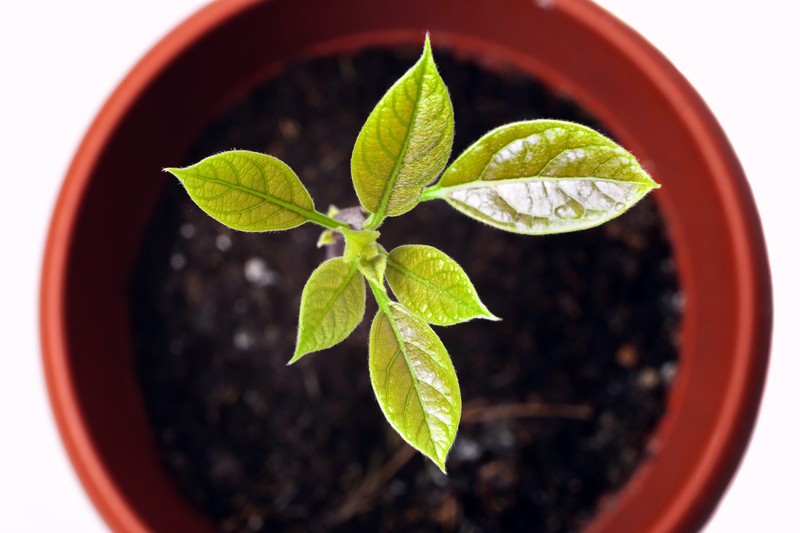Guiding Your Orchids to Flourish
Posted on 15/09/2025
Guiding Your Orchids to Flourish: A Comprehensive Care Guide
Orchids are renowned for their extraordinary beauty, unique blooms, and symbolic elegance. However, many plant enthusiasts find guiding orchids to flourish a challenging endeavor. Whether you're a novice or a seasoned gardener, learning the best strategies for orchid care is essential for ensuring your orchids thrive. This guide will unravel the mystery behind nurturing vibrant, healthy orchids year-round and provide expert tips for helping your orchids to flourish.

Understanding Your Orchid: The First Step to Success
What Makes Orchids Unique?
The orchid family (Orchidaceae) is one of the largest plant families, boasting over 25,000 species and more than 100,000 hybrids. Orchids vary in shape, color, and growing requirements, making them a diverse and fascinating group. Some of the most popular types include Phalaenopsis (moth orchids), Dendrobium, Cattleya, and Oncidium.
- Epiphytic Orchids: Most cultivated orchids, such as Phalaenopsis and Cattleya, are epiphytes, meaning they grow on trees in their native habitats, not in soil.
- Terrestrial Orchids: These species grow in the ground but still require well-draining media.
Knowing your orchid's natural origin is critical to guiding it to flourish. When you understand where your plant comes from, you can better replicate its preferred environment, helping your orchids achieve their best potential.
Essential Conditions for Flourishing Orchids
1. Providing the Right Light
Light is among the most important factors in orchid success. Most orchids prefer bright, indirect sunlight. Direct sunlight can scorch their leaves, while too little light will hinder flowering and growth. A tell-tale sign of healthy light exposure is light green, firm leaves.
- East- or west-facing windows: These provide optimal light for most orchids without the intensity of midday sun.
- South-facing windows: Suitable for light-hungry orchids like Dendrobiums, but consider using sheer curtains to diffuse intense sun.
- Artificial grow lights: Perfect for indoor gardeners or those with insufficient natural light.
Rotate your orchid weekly for even growth, and watch for signs: Dark green leaves? Add more indirect light. Red or yellow leaves? Too much sunlight--pull your orchid slightly back from the window.
2. Ideal Temperatures for Thriving Orchids
Orchids flourish within specific temperature ranges, which can vary by species; however, most common varieties prefer:
- Daytime: 65-80?F (18-27?C)
- Nighttime: 60-70?F (16-21?C)
Many orchids benefit from a slight nighttime temperature drop to trigger blooming. Avoid placing your orchid near drafty windows, air conditioning, or heating vents, as sudden temperature changes can stress your plant.
3. Mastering Humidity and Air Circulation
Orchids are native to humid, tropical environments. Maintaining 50-70% humidity helps guide your orchids to flourish, especially in dry indoor spaces.
- Use a humidity tray or pebble tray filled with water under the orchid pot (without letting roots sit in water).
- Mist plants regularly in the morning, avoiding excess water on flowers.
- Invest in a room humidifier for consistent moisture.
Proper air movement prevents fungal and bacterial diseases. Position a small fan nearby to circulate air, but avoid direct drafts.
4. Choosing the Right Potting Medium
Since orchids are not grown in typical potting soil, selecting the right growing medium is imperative for success. Common materials include:
- Bark Chips: Most popular, especially for Phalaenopsis. They provide excellent aeration.
- Sphagnum Moss: Retains more moisture, ideal for orchids with higher humidity needs.
- Coconut Husk: Eco-friendly, good moisture retention, and slow to break down.
- Leca Balls: Lightweight expanded clay; excellent drainage and reusable.
Repot orchids every 1-2 years, or when the potting medium breaks down, ensuring healthy roots and continued growth.
Watering Orchids for Healthy Blooms
How Often Should You Water?
The number one mistake orchid owners make is overwatering. Guiding orchids to flourish begins with correct watering practices. Here's how to master orchid hydration:
- Water only when the medium is almost completely dry. Insert your finger or use a wooden skewer to check the moisture at root level.
- Use room-temperature, distilled, or rainwater. Tap water can contain salts and chemicals that harm orchids.
- Avoid letting roots sit in water. Always ensure pots have drainage holes to prevent root rot.
Tip: Water in the morning so excess water can evaporate, preventing rot and disease.
Recognizing Signs of Overwatering or Underwatering
- Overwatering: Yellow, limp leaves; mushy roots; mold on medium.
- Underwatering: Shriveled, wrinkled leaves; dry, brittle roots.
If you see these symptoms, adjust your watering schedule accordingly to help guide your orchid back to flourishing health.
Fertilizing Orchids to Encourage Growth
The Role of Orchid Fertilizer
Fertilizing gives your orchid nutrients not found in water or potting medium. A balanced orchid-specific fertilizer (such as 20-20-20) is recommended for general care. Some experts advise the "weakly, weekly" rule: dilute fertilizer to half strength and feed once a week during active growth.
- Reduce fertilizing during dormancy or winter.
- Flush the pot with plain water every 4-6 weeks to remove fertilizer salts.
Common Orchid Fertilizing Mistakes
- Over-fertilizing: Can burn roots and inhibit blooming.
- Using general-purpose fertilizers: These may not have the right balance of nutrients.
*Fertilizer is a supplement, not a substitute for good care.*
Orchid Blooming: How to Guide Your Orchids to Flower
Triggers for Flowering
Even well-cared-for orchids occasionally refuse to bloom. Factors influencing blooming success include:
- Light: Insufficient light is the most common reason for poor flowering.
- Temperature: Nighttime temperature drop by about 10?F (6?C) is often required to induce spikes.
- Age: Younger plants may need a year or two before their first bloom.
- Rest: For some orchids, a brief dormant period after flowering is necessary before they rebloom.
Encouraging Reblooming
- Maintain optimal light and temperature cycles.
- Don't cut the spike until it turns brown; some orchids rebloom from existing spikes.
- After flowers fade, reduce watering slightly and resume fertilizing when new growth appears.
Patience is key! Consistent, thoughtful care is the best method for guiding orchids to flourish and achieve spectacular blooms year after year.
Troubleshooting Orchid Challenges
Common Orchid Problems
- Pests: Watch for aphids, spider mites, mealybugs, and scale insects. Use horticultural oil or insecticidal soap as needed.
- Disease: Root rot, leaf spots, and mold are linked to overwatering or poor air movement.
- Leaf drop or yellowing: Usually due to environmental stress or aging leaves.
Rescue and Recovery Tips
- Isolate sick orchids to prevent spreading issues.
- Remove affected areas with sterilized scissors and treat with fungicide if needed.
- Check roots and repot into fresh, sterile medium if rot is present.
Prevention through vigilance is the best way to guide your orchids to robust health!
Repotting Orchids: When and How
Signs It's Time to Repot
- Potting medium breakdown: Smell of rot, or compressed, soggy bark.
- Outgrown pot: Roots circling the pot or growing far out of the drainage holes.
- After flowering: The best time to repot most orchids is after the blooming cycle finishes.
Step-by-Step Repotting
- Gently remove the orchid and rinse off old medium.
- Trim any dead roots with sterilized scissors.
- Place in new pot with fresh, appropriate orchid medium.
- Water lightly and keep in a shaded spot for a week to recover.
Repotting is crucial for guiding your orchid's ongoing growth and flourishing.
Seasonal Orchid Care Tips
Spring and Summer
- Increase watering and fertilizing as new growth emerges.
- Watch for pests during warmer, humid months.
- Acclimate orchids to more sunlight, but monitor for leaf burn.
Fall and Winter
- Reduce watering as growth slows; avoid letting roots dry out completely.
- Ensure adequate humidity with heaters running indoors.
- Encourage blooms with slightly cooler nighttime temperatures.
Expert Tips for Guiding Your Orchids to Flourish
- Observe your plants: Closely watching leaves, roots, and flowers provides clues for adjustments.
- Be patient: Orchids are slow growers. Consistent care leads to rewarding results.
- Start with easy species: Phalaenopsis orchids are highly recommended for beginners, given their adaptability and reliable blooms.
- Document your care routine: Keeping notes helps you learn what works best for your unique home environment.
- Join orchid communities: Online forums and local societies offer invaluable experience and troubleshooting advice from fellow enthusiasts.

Frequently Asked Questions: Your Orchid Care Questions Answered
Why are my orchid's leaves turning yellow?
Yellowing leaves can result from natural aging, overwatering, nutrient deficiency, or sunlight stress. Evaluate your care routine and make necessary adjustments.
How do I encourage my orchid to rebloom?
Ensure your orchid receives enough indirect light, proper day/night temperature differences, and occasional rest. Continue regular care, and patience will be rewarded.
Can I use regular potting soil for my orchids?
No. Orchids require specialized media like bark or sphagnum moss to support drainage and aeration. Regular soil retains too much moisture and suffocates orchid roots.
How long do orchid blooms last?
With ideal conditions, Phalaenopsis blooms can last up to three months; other types vary. After blooming, continue care to encourage future flower spikes.
Conclusion: Flourishing Orchids Begin With You
Guiding your orchids to flourish is a rewarding journey that blends science, patience, and a touch of artistry. By understanding their unique needs--light, temperature, humidity, watering, and thoughtful observation--you set your orchids up for a lifetime of health and stunning blooms. Start small, learn from every challenge, and enjoy the process of nurturing one of nature's most elegant plants.
With care, diligence, and the right knowledge, anyone can guide their orchids to flourish!

